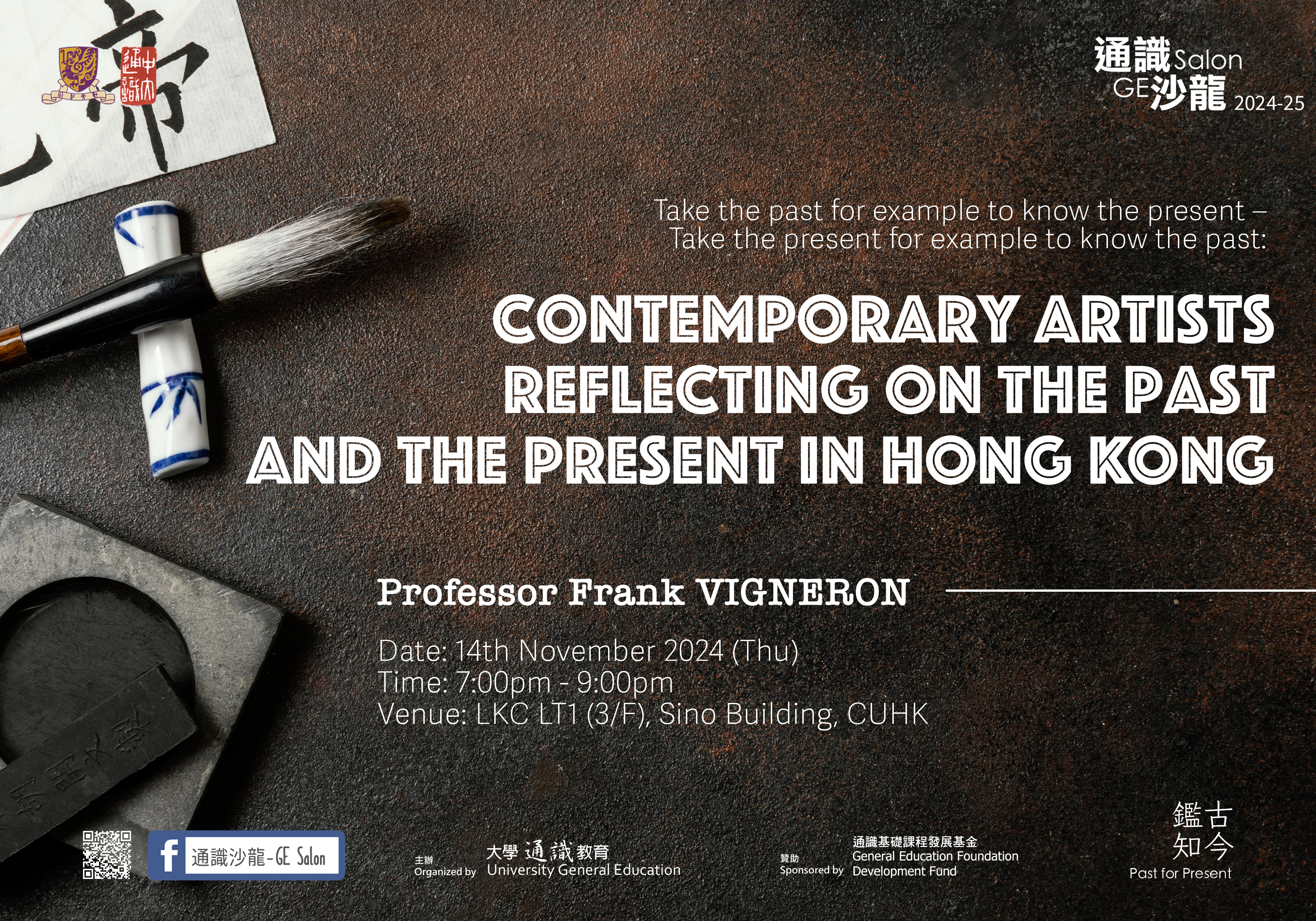Events
[GE Salon] Take the past for example to know the present – Take the present for example to know the past: Contemporary artists reflecting on the past and the present in Hong Kong
14 Nov 2024
7 p.m. – 9 p.m.
LKC LT1 (3/F), Sino Building, CUHK
Professor Frank VIGNERON
Professor Vigneron received a Ph.D. in Chinese Art History from the Paris VII University, a Ph.D. in Comparative Literature from the Paris IV Sorbonne University and a Doctorate of Fine Arts from the Royal Melbourne Institute of Technology. He joined the Department of Fine Arts, CUHK in 2004, teaching courses on the History of Western Art, the theories of Modernism and Postmodernism in art, and Chinese and Western comparative aesthetics. His research focus is on the history of Chinese painting from the 18th century onwards and on different aspects of contemporary Chinese art seen in a global context.
CUHK Student and Staff: https://webapp.itsc.cuhk.edu.hk/ras/restricted/event?id=93889
General Public: https://cloud.itsc.cuhk.edu.hk/webform/view.php?id=13698239
GE Salon 2024-25 Past for Present: Tales of Human Bonds and Everyday Artifacts
Every bond of human affection and every artifact has its own unique evolution. Without a past, there can be no future to inherit. Lacking a future in the present makes it difficult to have hope. This year’s GE Salon delves into the history of human bonds and everyday artifacts, exploring a treasure trove of knowledge closely related to our lives.
Brush and ink (筆墨) have been the backbone of painting in China for over a millennium. In Hong Kong, some artists in the 1960s have tried to introduce modernist elements into the practice of painting and launched a movement referred to as ‘New Ink’, thus initiating an attitude towards the past that still resonates in the practice of contemporary artists today. To promote the recognition of this movement and the attitude it fostered, some Hong Kong institutions have encouraged the development of a variety of practices that have greatly widened the very idea of what ‘Chinese painting’ can be. Not only are these practices relying on much more than just the use of brush and ink, but they have also questioned many of the assumptions that have often come with the idea of what ‘Chinese art’ or ‘literati painting’ have been. The past, in these new practices, has therefore become more than just a source of inspiration: in confronting the past, contemporary Chinese artists have opened a reflection on the nature of art that will not cease to provide new ideas and new directions.
In English
Free admission, all are welcome.
______________________
Organized by Office of University General Education, The CUHK
Sponsored by General Education Foundation Development Fund


